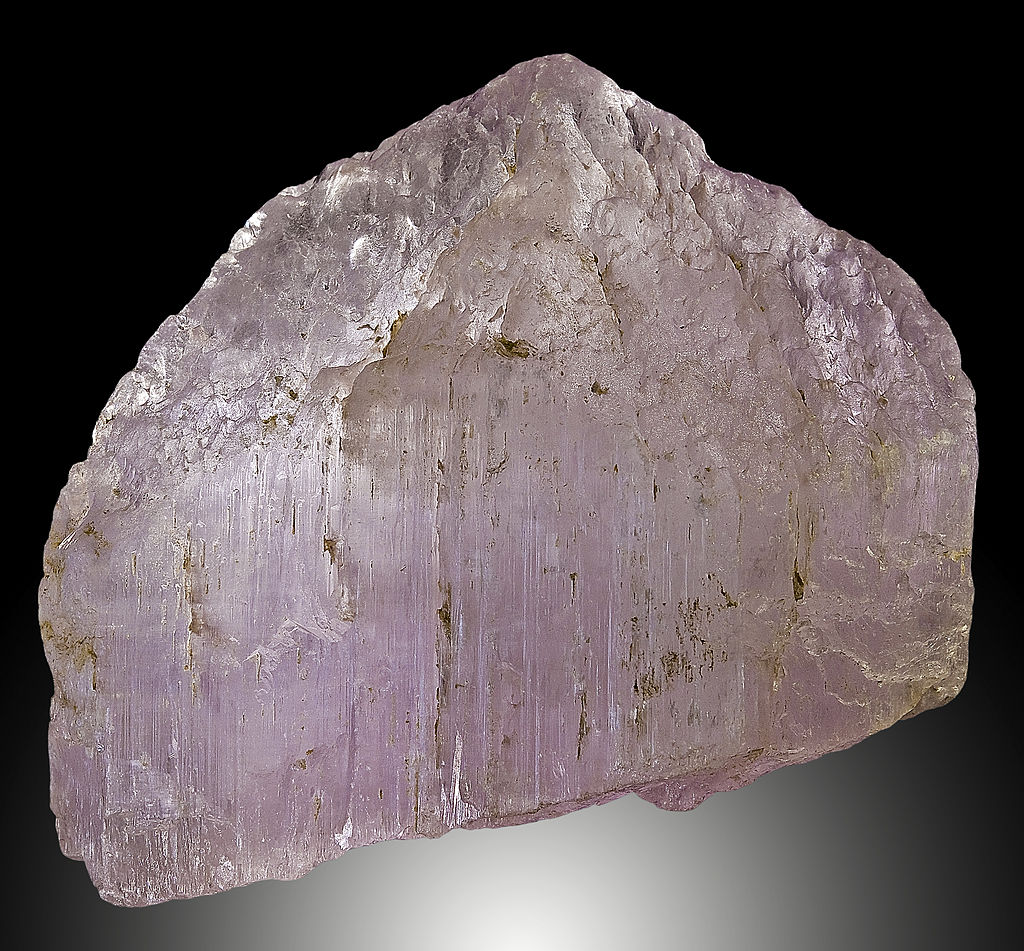
Kunzite is the pink to light purple gem variety of the mineral Spodumene. Spodumene is a common mineral, but only in several localities does it occur in transparent gem form. The main gem form of Spodumene is Kunzite, the other is the rarer Hiddenite. Yellow and colorless gem forms of Spodumene also exist, but are not commonly faceted as gemstones. Kunzite has a lovely pink color and is becoming increasingly popular in the gemstone market.
Chemical Formula: LiAlSi2O6
Color: Pink, Purple
Hardness: 6.5 - 7
Crystal System: Monoclinic
Refractive Index: 1.66 - 1.68
SG: 3.1 - 3.2
Transparency: Transparent
Double Refraction: .015
Luster: Vitreous
Cleavage: 1,2 - prismatic
Mineral Class: Spodumene
All About: Kunzite is a relatively recent gemstone, having been first discovered in the 20th century. It was first found in the pegmatites of Pala, California, in 1902, and is named after the famous mineralogist George F. Kunz who first identified it. Though it wasn't until the 1990's that this gemstone became a more mainstream gemstone, having been used only as a collectors gemstone prior to that time.
Kunzite is a very attractive pink gem, but is notorious for its habit of color fading in prolonged exposure to strong light. Although the color-fading effect is very slow, most people still prefer to wear Kunzite jewelery in the evening to avoid sunlight exposure. Kunzite is regarded as an evening stone for this reason.
Kunzite deposits are quite extensive and yield large amounts of this gemstone, thus making it very affordable. Extremely large and flawless crystals of Kunzite have been found, and these can yield very large and flawless faceted gemstones.
The perfect cleavage and splintery fracture of Kunzite makes it a difficult gemstone to facet. It is very sensitive to knocks and will chip if hit too hard. Kunzite is known for its strong pleochroism, showing lighter and more intense coloring when viewed at different angles. For this reason, it is always cut to show the deepest pink color through the top of the gem. The deeper pink the Kunzite, the more valuable it generally is.
Uses: Although Kunzite is a relatively soft and delicate gem, and can fade after prolonged exposure to light, its appealing color makes it a popular gem. Small gems are not commonly cut from Kunzite because of its cleavage and strong pleochroism. It is most often used as a pendant stone and as a large decorating stone on ornamental objects. It is less commonly used in rings, necklaces, or other jewelry items where small stones are required. Less transparent stones are sometimes cut into cabochons and beads.
Varieties: Blue Kunzite - Light blue to bluish green transparent form of Spodumene.
Yellow Kunzite - Yellow transparent form of Spodumene.
History and Introduction:Kunzite is the pale pink to light-violet gem-quality variety of the pyroxene mineral spodumene, a lithium aluminum inosilicate. Kunzite was first discovered in Connecticut, USA, and was named after George Frederick Kunz (1856 - 1932), an American mineralogist and the former vice president and buyer for Tiffany & Company. Kunz was a legendary New York jeweler and colored stone specialist, and he was the first to comprehensively describe the stone in 1902.
Although it was first discovered in the USA, most of the current supply of kunzite is found in Afghanistan and Pakistan. Kunzite is closely related to hiddenite, the yellow-green member of the spodumene gemstone family which was also discovered and named after an American mineralogist, W. E. Hidden; as well as the classic golden to yellow color gem-quality spodumene. Kunzite is known to produce gemstones of great size. In fact, it's not uncommon to find fine quality stones weighing 20 carats or more. Kunzite and the entire spodumene group are important industrial sources of lithium, which is used for the making of medicines, ceramics, mobile phones and automotive batteries.
Sources:
https://www.minerals.net/gemstone/kunzite_gemstone.aspx https://www.gemselect.com/gem-info/kunzite/kunzite-info.php